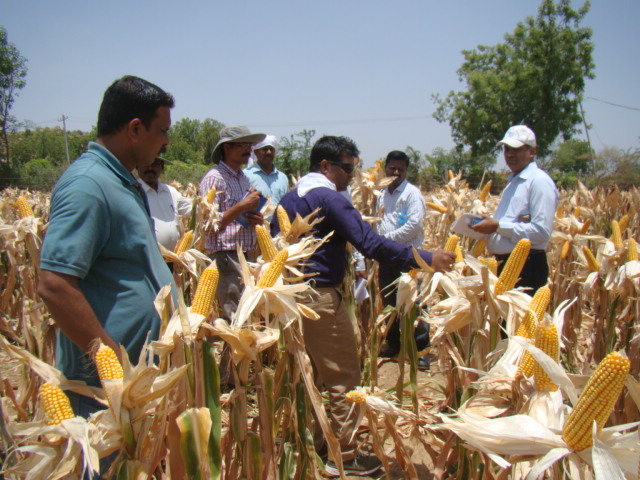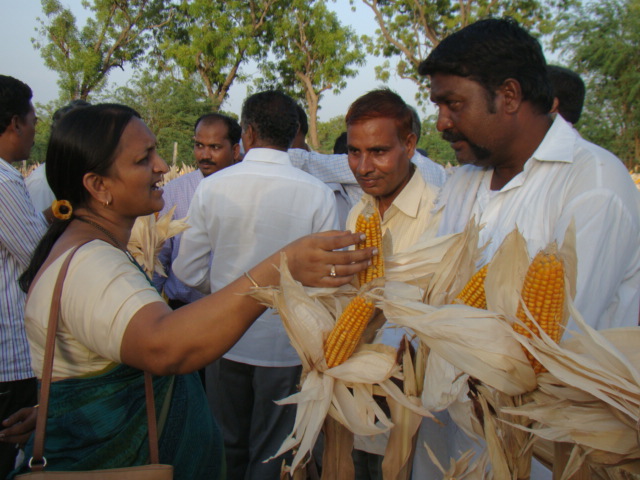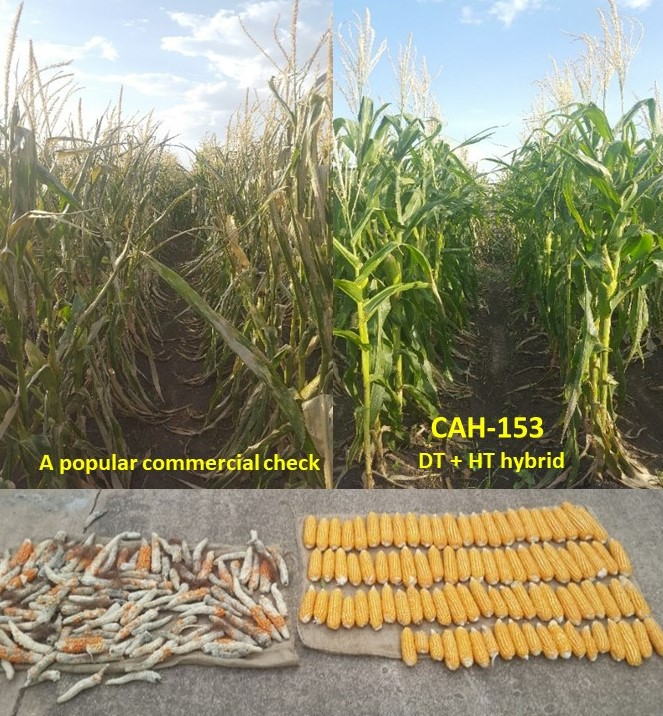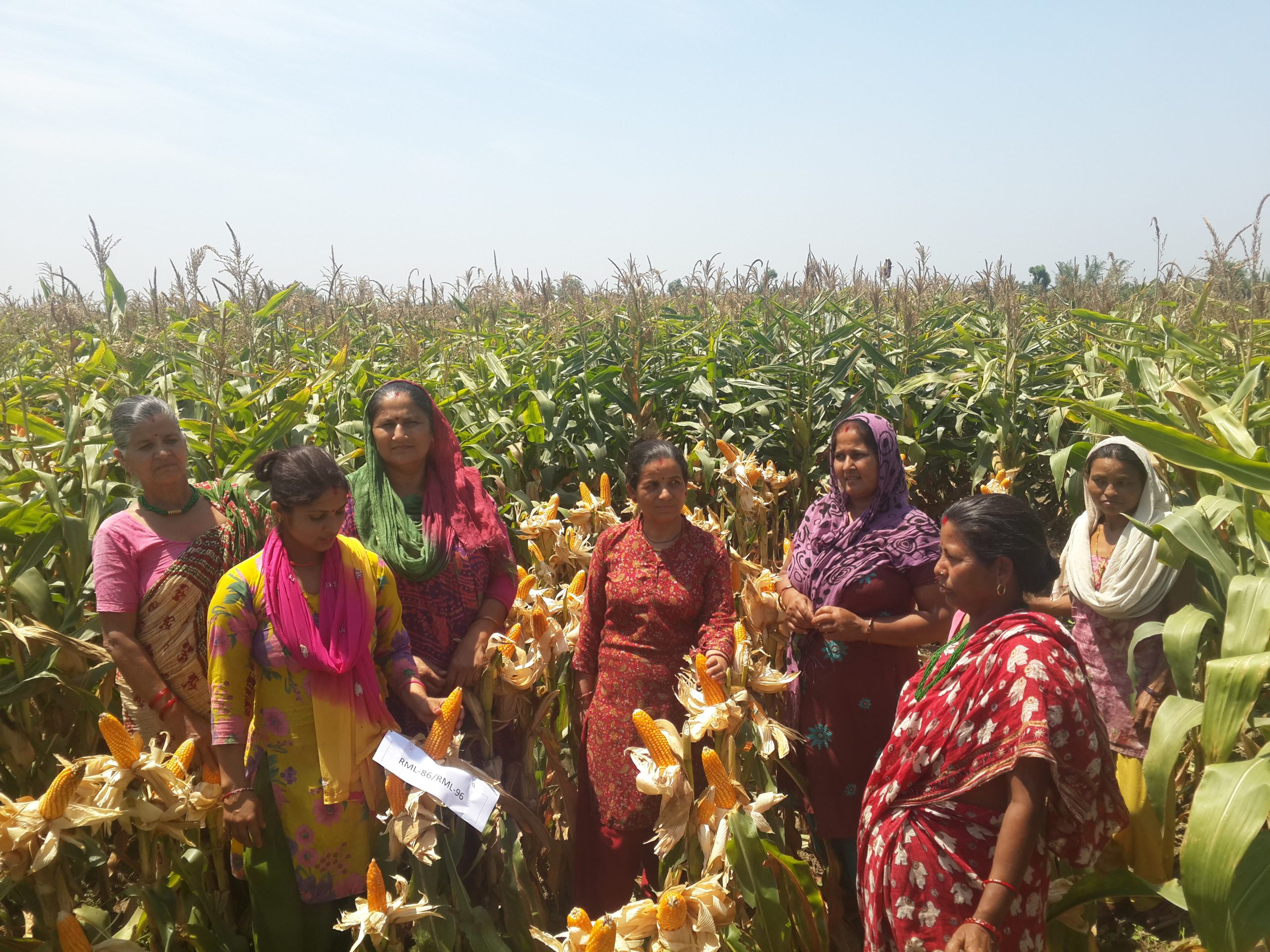
Millions of smallholders in the Global South depend on maize, largely cultivated under rainfed conditions, for their own food security and livelihoods. Climate change mediated weather extremes, such as heat waves and frequent droughts, pose a major challenge to agricultural production, especially for rainfed crops like maize in the tropics.
“With both effects coming together under heat stress conditions, plants are surrounded, with no relief from the soil or the air,” said Pervez H. Zaidi, maize physiologist with CIMMYT’s Global Maize Program in Asia. “Climate change induced drought and heat stress results in a double-sided water deficit: supply-side drought due to depleted moisture in soils, and demand-side drought with decreased moisture in the surface air. “
Extreme weather events
Weather extremes have emerged as the major factor contributing to low productivity of the rainfed system in lowland tropics. South Asia is already experiencing soaring high temperatures (≥40◦C), at least 5◦C above the threshold limit for tropical maize and increased frequency of drought stress.

“In today’s warmer and drier climate, unless farmers have copious amounts of water (which might not be a sustainable choice for smallholders in the tropics) to not only meet the increased transpiration needs of the plants but also for increased evaporation to maintain necessary levels of humidity in the air, the climate change mediated weather extremes, such as heat and drought pose a major challenge to agricultural production, especially for rainfed crops like maize in lowland tropics,” said Zaidi.
To deal with emerging trends of unpredictable weather patterns with an increased number of warmer and drier days, new maize cultivars must combine high yield potential with tolerance to heat stress.
Maize designed to thrive in extreme weather conditions
CIMMYT’s Global Maize Program in South Asia, in partnership with public sector maize research institutes and private sector seed companies in the region, is implementing an intensive initiative for developing and deploying heat tolerant maize that combines high yield potential with resilience to heat and drought.
By integrating novel breeding and precision phenotyping tools and methods, new maize germplasm with enhanced levels of heat stress tolerance is being developed for lowland tropics. Over a decade of concerted efforts have resulted in over 50 elite heat stress tolerant, CIMMYT-derived maize hybrids licensed to public and private sector partners for varietal release, improved seed deployment, and scale-up.

As of 2023, a total of 22 such high-yielding climate-adaptive maize (CAM) hybrids have been released by partners throughout South Asia. Through public-private partnerships, eight hybrids are being already deployed and scaled-up to over 100,000 hectares in Bangladesh, Bhutan, India, Nepal, and Pakistan. Also, the heat tolerant lines developed by CIMMYT in Asia were used by maize programs in sub-Saharan Africa for developing heat tolerant maize hybrids by crossing these as trait donors with their elite maize lines.
Studies on the new CAM hybrids show that while their yield is like existing normal maize hybrids under favorable conditions, the CAM hybrids outperform normal hybrids significantly under unfavorable weather conditions.
“The unique selling point of the new CAM hybrids is that they guarantee a minimum yield of at least 1.0 tons per hectare to smallholder farmers under unfavorable weather when most of the existing normal hybrids end-up with very poor yield,” said Subhas Raj Upadhyay, from the Lumbini Seed Company Ltd. in Nepal.
Given the superior performance of CAM seeds in stress conditions, Nepali farmers have expressed willingness to pay a premium price: an average of 71% more with government subsidy, or at least 19% extra without a subsidy for CAM seed. Similarly, the farmers in hot-dry areas of the Karnataka state of India are ready to pay 37% premium price for CAM seed compared to normal hybrid seed. These reports strongly validate the demand of CAM seed and therefore a targeted initiative is needed to accelerate deployment and scaling these seeds in climate-vulnerable marginal agroecologies in tropics.

 Climate adaptation and mitigation
Climate adaptation and mitigation